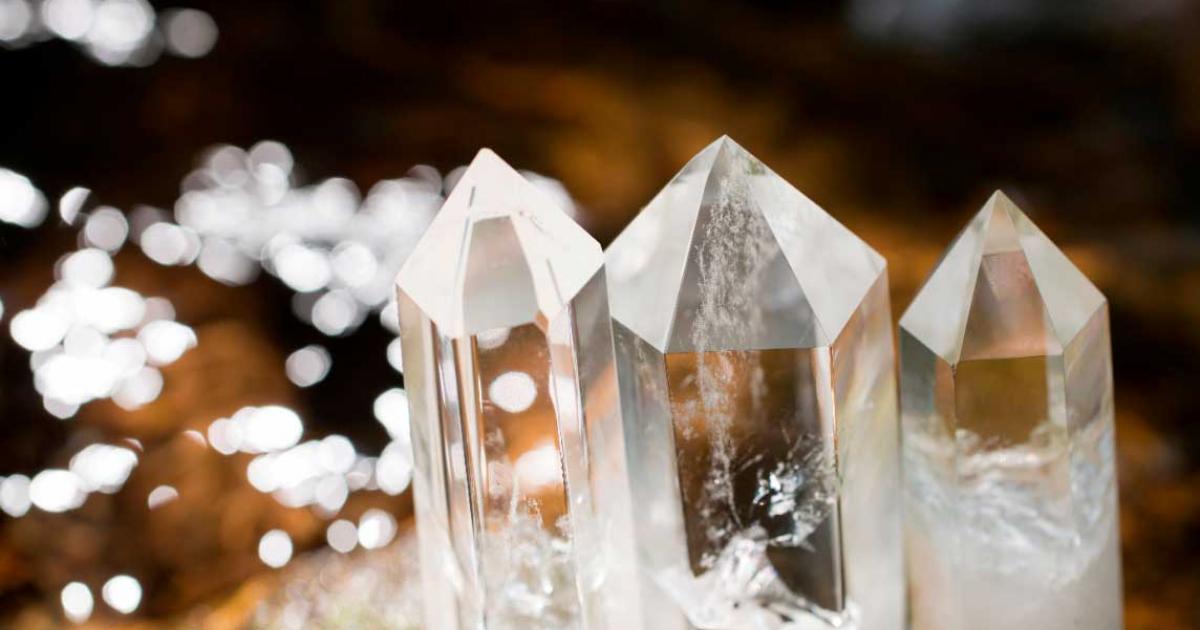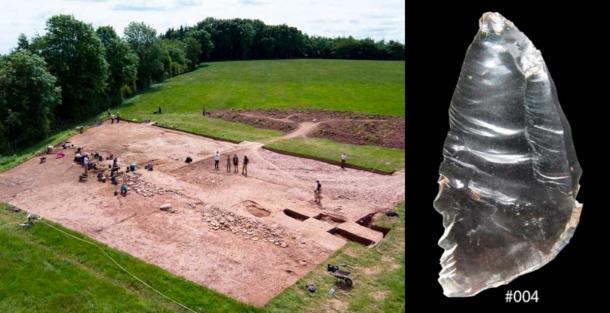
Rare Rock Crystals were Used in Neolithic Death Rituals
Fascinating new archaeological research emerging from Manchester in Britain has pointed to a previously unexplored burial ritual used by Early Neolithic Britons. Archaeologists from the University of Manchester have found that extremely distinct and rare rock crystals were moved long distances and used to mark burial sites. The chosen rock crystals for the graves were made of quartz, perfectly transparent, and of a relatively large size for this purpose.
Rock Crystal Grave Markers in the British Isles: A Burial Tradition Yet to be Explored
Scientific research at a Neolithic burial mound site at Dorstone Hill in England’s West Midlands has shown that “the distinctive and exotic rock crystal was being used to create distinctive and memorable moments, binding individuals together, forging local identities, and connecting the living and the dead,” write the authors of the study.
- For 3.3 Million Years Stone and Crystal Traditions Have Shaped Our Destiny
- Neolithic Burial Mound Uncovered Near Stonehenge
This research, published in the Cambridge Archaeological Journal, explores a burial ritual which has only rarely been found at prehistoric sites in the British Isles. However, little archaeological research has gone into examining how the material was worked, why it was used, and the cultural and social connotations of its usage.

Examples of larger pieces of rock crystal within the Dorstone Hill assemblage, including cores and pieces exhibiting crystal edges. (Overton et al. 2022 / Cambridge Archaeological Journal)
The researchers collaborated with experts from the University of Cardiff and Herefordshire County Council, studying a vast complex that included 6,000-year-old timber halls, burial mounds, and enclosures from the Early Neolithic period, as per a press release by the University of Manchester. In Britain, settled agriculture and farming techniques started appearing around 6,000 years ago, part of a larger historical process that had emerged in Western Asia 10,000 years ago.
Here, they found artifacts across a wide spectrum – pottery and stone implements, along with cremated bones and knapped flint, which had been turned into various tools like arrow heads and scrapers. Crucially, they identified knapped rock crystal, which had not been turned into tools.
The pieces had just been gathered and placed inside the burial mounds, potentially over a 300 year time period that would have encompassed several generations. As of now, very few sites have been found that have produced such pure rock crystals in the British Isles. The closest to Dorstone Hill are Snowdonia in Northern Wales, and Saint David’s Head in southwestern Wales.

Excavations at Dorstone Hill and one of the rock crystals found at the site. (The University of Manchester)
This implied that our ancestors would have had to carry this material across large distances and varied geographical terrains, at great personal cost. For the archaeologists, this has further emphasized the importance of these rock crystals. One of the reasons why people used rock crystals from other locations, the researchers speculate, was to connect local identities from across the islands. There was potentially a prehistoric network in place, tying one place to the other.
Creating Memorable Moments and Connecting with the Dead
According to lead researcher Dr. Nick Overton, the “exceptionally rare crystals” provided a distinctive appeal to the researchers, who were curious about how people used them and worked with them in the past.
- Amazing Crystal Weapons Discovered Within 5,000-Year-Old Megalithic Tomb in Spain
- The True Origins of Arthur’s Stone in Herefordshire Finally Revealed
“The crystals would have looked very unusual in comparison to other stones they used, and are extremely distinctive as they emit light when hit or rubbed together and produce small patches of rainbow - we argue that their use would have created memorable moments that brought individuals together, forged local identities and connected the living with the dead whose remains they were deposited with,” Overton added.

The refractive qualities of a small internal structure within one of the rock crystals. (Overton et al. 2022 / Cambridge Archaeological Journal)
For historians focusing on ancient history and pre-history, where written sources are either not available or scarce, the presence of a material that is not found locally always suggests a larger exotic appeal and ties to communities and people beyond the immediate location where the artifacts are found. It can also indicate trade based ties, though in such an early period of history, this may not be the case.
Local traditions that have not yet been explored or understood can now be looked into, if this rock crystal material is found at other sites - a direction of study the researchers now plan to undertake. They also plan to enlist the help of scientists who work with chemical compositions, in a bid to potentially trace and track the source of this beautiful material.
Top image: Neolithic people in Britain used rock crystals to mark burial sites. Source: varts / Adobe Stock
By Sahir Pandey
References
Overton, N.J., Healey, E., et al. 2022. Not All That Glitters is Gold? Rock Crystal in the Early British Neolithic at Dorstone Hill, Herefordshire, and the Wider British and Irish Context. Cambridge Archaeological Journal. Available at: https://doi.org/10.1017/S0959774322000142
Stafford, J. 2022. Prehistoric Brits used rare rock crystals to mark burial sites, research finds. Available at: https://www.manchester.ac.uk/discover/news/prehistoric-brits-used-rare-rock-crystals/
















Comments
Neolithic Death Rituals? Were they a real thing? Or did they all die at once, suddenly?
Nobody gets paid to tell the truth.
Atlantean spiritual(,yellowhat) technology used crystals.. i actually own a piece of quartz(found by a spelunker friend) that has been obviously artificially marked (what appears to be etched writing and triangular sections of the tip removed).. it may not be the same as these particular crystal.. im just putting it out there..and for those asshats that would call bull? Email me n ill send pics
infinitesimal waveparticles comprise what we call home the earth
manipulatable by thought ability supressed in humans since birth